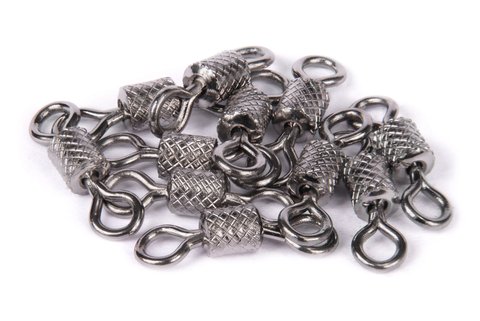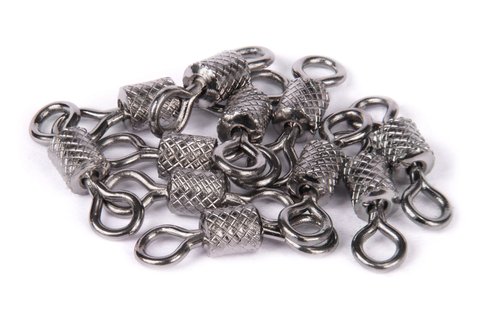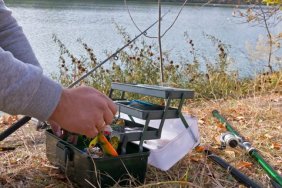 Some anglers use swivels all the time, while others never use them. So when are swivels or steel leaders really needed?
Some anglers use swivels all the time, while others never use them. So when are swivels or steel leaders really needed?
The swivel was created to prevent line from twisting and potentially breaking while retrieving a lure or playing a fish, yet often they are used as an easy way to switch lures, without the hassle of tying and retying knots. The latter use of a swivel is certainly handy, but in most cases it is not essential.
The best rule of thumb when deciding whether to use a swivel or steel leader is to decide if the line will be twisting during the retrieve of a lure or the playing of the fish. Most lures, such as a crankbait, will not twist on the retrieve, so a swivel is not required. Other lures, such as a spoon or spinner, tend to twist on the retrieve, so a swivel is a good choice to prevent twisting and weakening of the line.
Swivels are not typically required for live bait, but that can depend on the type of fish an angler is pursuing. Some fish, such as a catfish, tend to twist the line as an angler is reeling it in, which weakens the line and increases the chances of the line breaking. So if you are fishing for a species that tends to twist the line, the best bet is to use a swivel.
The steel leader with a swivel is the best choice when pursuing fish with sharp teeth. Northern pike, walleyes and muskies are good examples of fish that have sharp teeth. If fishing without a steel leader, it is easy for the teeth to nick or cut the line, resulting in line breakage and a lost fish.
The decision on whether to use a swivel can also be weighted by the type of tackle you are using. Spinning reels typically have issues with twisting line and a swivel can help to alleviate those problems.
If you are using a swivel, it is important to note that there are three basic types available: the barrel, crane and ball bearing. The barrel swivel is the cheapest of the three kinds. It is functional in basic angling situations, but is the most likely to fail under high-stress conditions. In contrast, the crane swivel is more durable and the better choice, especially when pursuing larger fish. Lastly, the ball bearing swivel is better suited to very large fish or for trolling on big water.
There is certainly plenty of gray area when it comes to deciding whether to use a swivel, but analyzing the situation and determining if the line will be twisting at all is a good place to start. In most cases, a swivel will not reduce your chances of catching a fish, so when in doubt, use a swivel to prevent line twisting and the possible loss of a fish.








